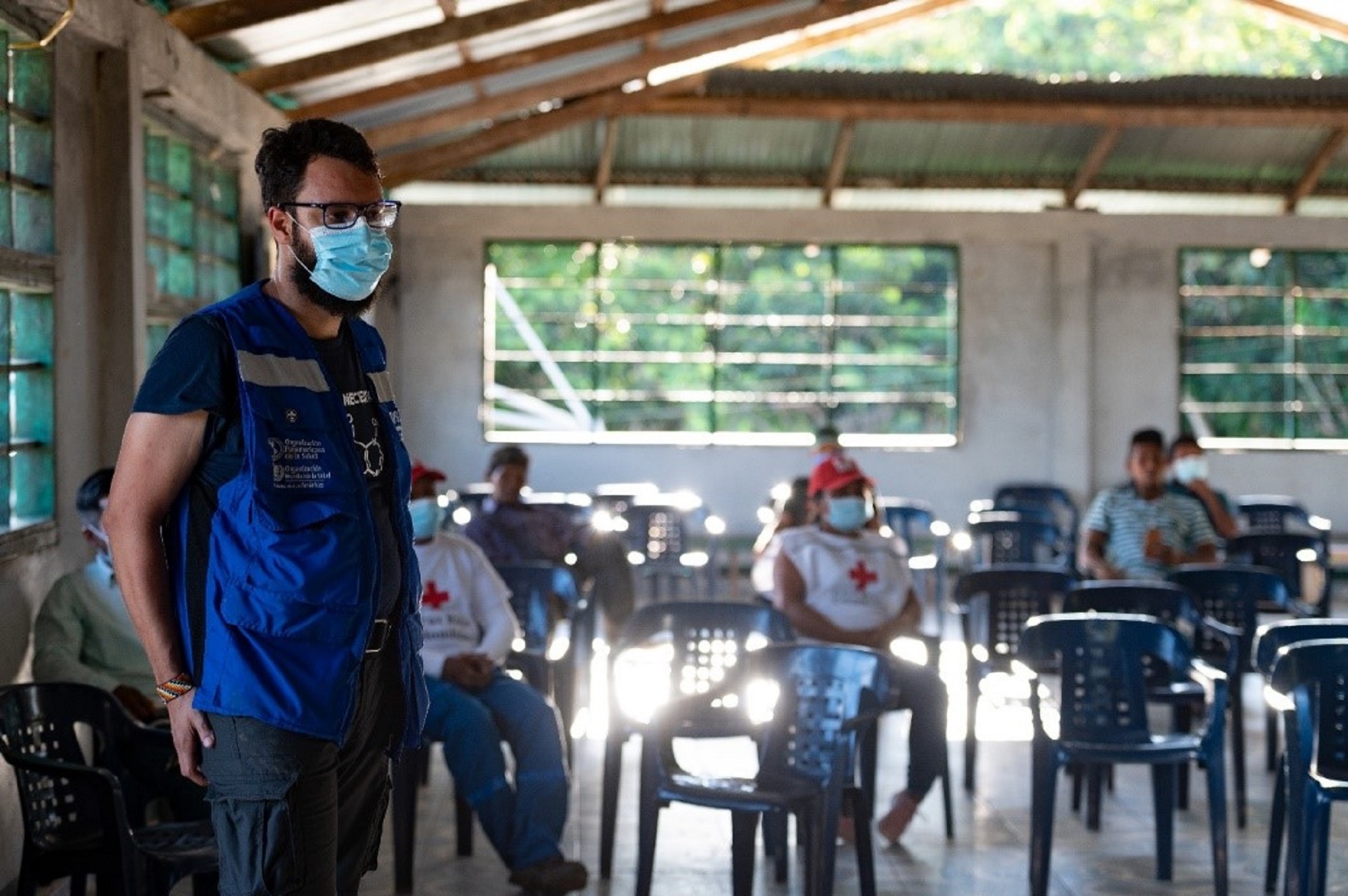In 2021, the Colombian media reported that many indigenous people in the country would not accept being vaccinated against COVID-19 based on cultural practices and beliefs. The National Indigenous Organization in Colombia (ONIC) reported that the virus was present in 72 of the 115 indigenous communities, had caused 1385 deaths, with 41 313 cases reported [1]. With 1.9 million indigenous people in Colombia, 82% of whom were registered in the national Social Security and Health System, the challenge to change beliefs and behaviour was significant.
In August, the health minister stated that only 6% of the indigenous population had been vaccinated [2]. To address the urgent situation, the Pan American Health Organization (PAHO) and the WHO Country Office in Colombia designed and rolled out a communications strategy tailored specifically for indigenous communities to promote acceptance of COVID-19 vaccines. Drawing from indigenous peoples’ customs, the strategy emphasized the use of oral communication: vaccination brigades included indigenous translators; training of trainers involving cultural leaders created a multiplier effect for dissemination of information; and free phone applications were distributed to vaccinators in remote areas facilitating connectivity.
Before the end of the year, the communications strategy produced the desired results measured by increased vaccine uptake. In prioritized areas of the Amazonia region, for example, 34% of the indigenous population was vaccinated in 2021. By February 2022, one year after the initiation of vaccination against COVID-19 in Colombia, 36.7% of the indigenous population was vaccinated [2].

How did Colombia do it, and how did the WHO/PAHO Secretariat support Colombia?
- Communication strategy with an ethnic approach and cultural adaptation – The strategy included implementation of knowledge dialogues, risk communication workshops, development of actions, and communication pieces such as radio messages based on storytelling, video clips, billboards, etc.
- Learning from research – The ethnically-appropriate communication strategy drew from the fields of medical anthropology and behavioural sciences and health education. The evidence-base from these two academic fields provided guidance on how to connect traditional and western science-based medicine to overcome vaccine resistance.
- Mobilizing funds – The Government of Colombia supported the initiative by financing implementation of the strategy in the Amazonia region, within the framework of Comunidad Andina de Naciones. Additional funds from the United Nations Central Emergency Response Fund (CERF) and the Government of Canada were mobilized by the WHO/PAHO Country Office in partnership with the Government of Colombia.
- Rolling out the tailored communications strategy – By the end of 2021, the PAHO/WHO Country Office communications strategy had reached numerous indigenous communities in Tarapacá, Puerto Arica and La Chorrera in the Amazonia region; Barbacoas and Ricaurte in the Nariño province; municipalities near San Juan and the Atrato river in the Chocó province; and Sierra Nevada de Santa Marta in the Magdalena province.
- Replication through education and training – The WHO/PAHO Country Office held a training workshop on intercultural health education and communication for 80 young people in the Nariño region and leaders from 32 indigenous territories to confront massive rejection of the vaccine by indigenous populations. Engagement of youth and indigenous leaders resulted in 5372 people accepting to be vaccinated.
- Finding common ground – Communication was established connecting western science-based and traditional medicine, and generating intercultural dialogue, commonly shared beliefs, and mutual respect.
To increase uptake of the COVID-19 vaccine in indigenous communities in Colombia, it was necessary to demonstrate respect and recognition for: indigenous cultures; understanding the relationship between health and disease; the system of knowledge; and appropriate ways to create dialogue respecting the perceived reality of the pandemic. The PAHO/WHO communications strategy to reach indigenous populations in Colombia proved effective for COVID-19 vaccine coverage and led to behaviour change because it included elements that appealed to both emotions and reason.
A key challenge in the near future will be to provide health workers in the indigenous regions training in intercultural and ethnic approaches to COVID-19 vaccination and health. Similar strategies may be adapted for other populations and other health challenges, especially those facing the most vulnerable populations.
REFERENCES
[1]
Instituto Nacional de Salud. 18 Boletín Técnico Interactivo.
Afectaciones del COVID-19 en poblaciones indígenas. Septiembre 2021. https://www.ins.gov.co/Direcciones/ONS/Boletn%2018/pdf/boletin.pdf
[2] Ministerio de Salud y Protección Social. Así avanza la vacunación con el COVID -19 en grupos étnicos. 23 de agosto de 2022. https://www.minsalud.gov.co/Paginas/Asi-va-la-vacunacion-contra-el-covid-19-en-grupos-etnicos.aspx#:~:text=Con%20corte%20al%2018%20de,y%202.846%20en%20pueblo%20Rrom
Photo Credit: © Pan American Health Organization (PAHO)
Photo Caption: Training indigenous communities as health communicators.

